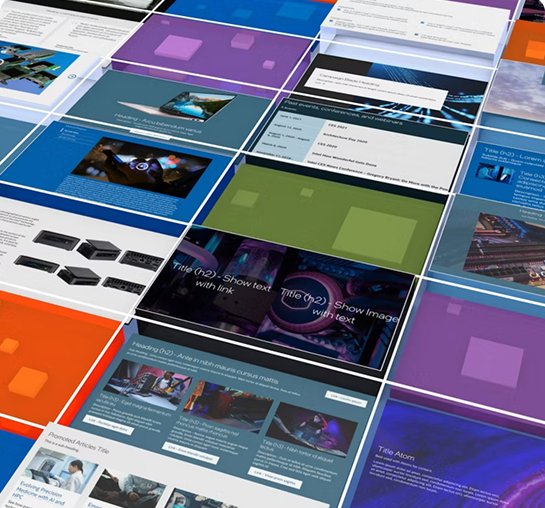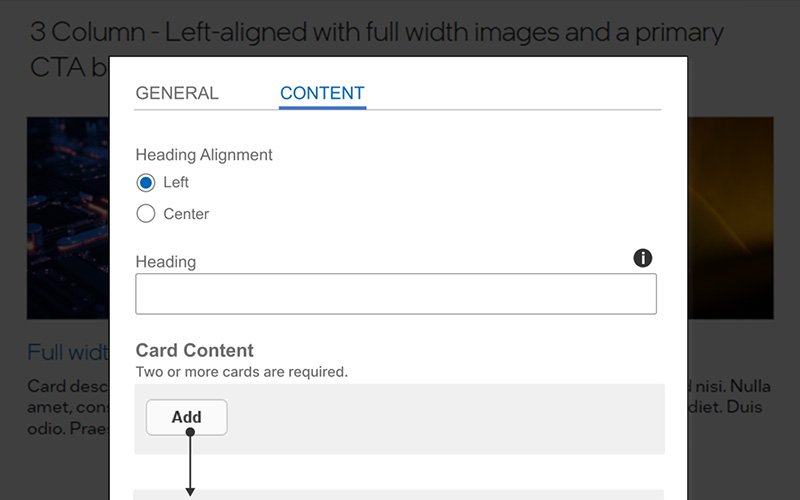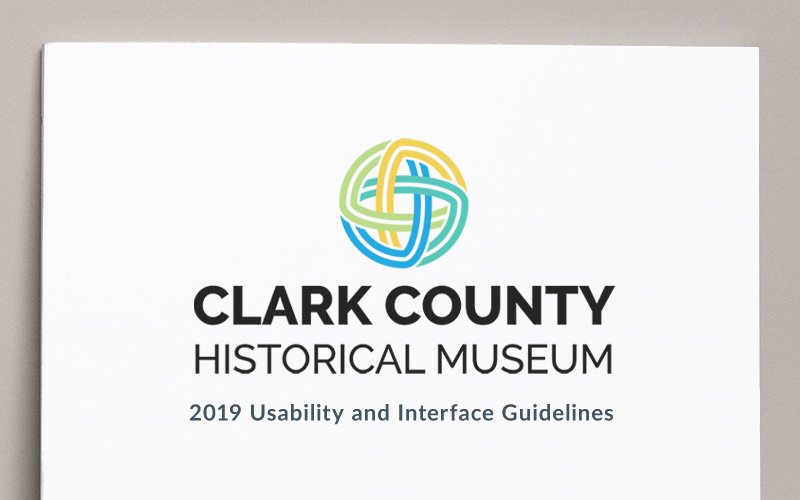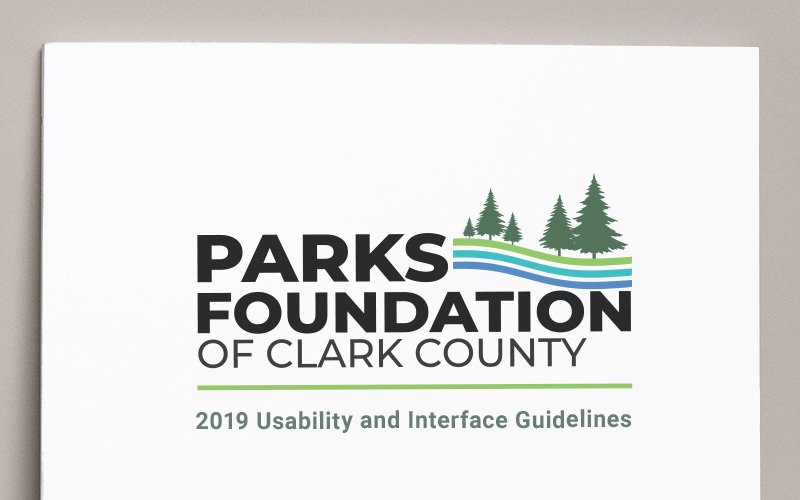Project Overview
Intel.com serves millions of users each month across over 700,000 web pages powered by more than 80 components and 15 templates.
This project aimed to establish a comprehensive documentation framework to bridge the gaps between design and development for Intel.com's component system, creating visual component narratives that would serve as a single source of truth from conception through User Acceptance Testing (UAT).
Scope
Develop a documentation system for the UX team that supported Intel.com's component library and development workflow, establishing scalable processes that would survive team transitions and tool changes.
Problem Statement
The Challenge
Newly developed AEM components and templates were getting lost in translation between design and implementation, creating a critical bottleneck for Intel.com's global UX team. Teams struggled with unclear specifications, inconsistent standards, and long delays between design handoffs and development cycles.
This translation gap created several critical problems:
- Frequent rework cycles due to misaligned expectations between design and development
- Delayed launches caused by unclear functional requirements
- Inconsistent implementation of design standards across components
- Knowledge silos between the UX, development, and QA teams
- Difficulty onboarding new team members and agency partners
My Discovery
I discovered that the main issue was the lack of a unified documentation system capable of supporting projects effectively from conception to User Acceptance Testing (UAT). The Pattern Library provided a foundational starting point, offering visual standards but lacking detailed functional specifications. Furthermore, it was incomplete and did not include essential design elements already used throughout the site, which resulted in inconsistencies.
Project files were stored inconsistently in SharePoint, making them challenging to locate and reference. Documentation varied significantly in format and completeness across different teams, leading to confusion and slowing down the adoption process. Crucial knowledge regarding AEM and Bootstrap integration was primarily held in the minds of developers rather than documented in shared resources. Teams needed component narratives alongside design specifications to fully understand how, what, and why to utilize each component effectively.
Research and Discovery
Methods Used
- Conducted stakeholder interviews: Spoke with members of the UX, development, and QA teams to understand their pain points and documentation needs.
- Mapped the knowledge repository: Analyzed existing documentation systems to know how information was stored and accessed across teams.
- Performed workflow analysis: Observed handoff processes between design and development to identify where communication broke down.
- Conducted a gap analysis: Determined where connections between design and implementation were lacking and what information was missing.
Key Insights and Findings
Through comprehensive analysis, I discovered a fragmented ecosystem within the project:
The Pattern Library served as a foundational starting point by providing visual standards. However, it lacked detailed functional specifications, was incomplete, and did not incorporate essential design elements already in use throughout the site, resulting in inconsistencies.
Project files were inconsistently stored in SharePoint, making them difficult to locate and reference. The documentation varied significantly in format and completeness across different teams, resulting in confusion and slowing down the adoption process. Valuable knowledge about AEM and Bootstrap integration resided mainly in the heads of developers rather than in shared resources. Teams required component narratives in addition to design specifications to fully understand how, what, and why to utilize each component.
Critical Discovery:
I realized the documentation problem wasn't only about missing deliverables, it pointed to deeper issues in process integration that hindered scalability and consistency throughout the entire development ecosystem.
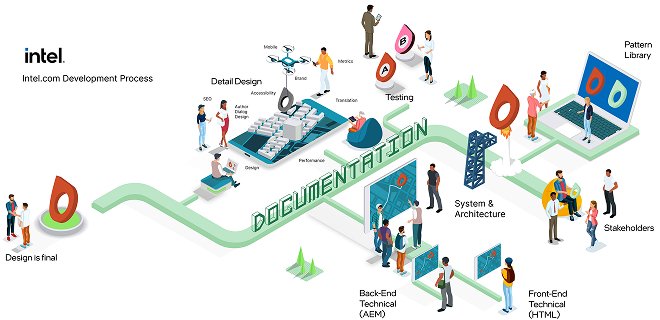
Personas
Five primary user groups, each with distinct documentation needs:
Designers (UX & UI)
Require clear methods for communicating design intent and rationale to ensure their vision translates accurately into implementation.
Project & Program Managers
Need visibility into requirements and progress tracking to manage timelines and ensure all stakeholders are aligned throughout the development process.
Front-end and Back-end Developers
Need detailed functional specifications and technical constraints to build components that match design intent while working within AEM and Bootstrap limitations.
Future Team Members & Outside Agencies
Require accessible knowledge preservation during transitions, enabling them to understand the system without extensive tribal knowledge or one-on-one training sessions.
QA Teams
Look for comprehensive testing criteria and expected behaviors to validate component functionality and ensure quality standards are met.
Ideation & Exploration
Design Thinking Process
As I worked through the challenges, I began exploring the idea of creating visual component narratives, a more engaging alternative to traditional specifications that simply list requirements. I wanted the documentation to tell a story, showing not just what a component looked like, but how it functioned and why it mattered.
To test this idea, I investigated interactive documentation methods that could make specifications easier to access and more meaningful for both designers and developers. I experimented with different formats and software for presenting technical details, working to strike a balance between clarity and usability. At the same time, I looked at how this documentation could be integrated directly into the development lifecycle, making it a living resource rather than a static deliverable.
Alternatives Explored
Along the way, I reviewed traditional approaches. Standard specification documents provided precision but lacked context. Purely visual documentation was easy to digest but offered little technical depth. Developer-focused technical documents captured implementation details but overlooked the design rationale.
Selected Approach
Ultimately, I chose a visual storytelling approach that combined the strengths of various methods. By developing comprehensive component narratives, the documentation provided both clarity and context—helping designers, developers, and stakeholders align not only on what to build but also on why it was important.
This approach balanced current constraints with scalable principles, creating documentation that:
- Communicated design intent through visual examples and user scenarios
- Provided technical specifications developers needed for implementation
- Explained the rationale behind design decisions
- Integrated seamlessly into the existing development workflow
- Served as a living document that evolved with the component
"Ann has changed how I think about digital creative work. It is the documentation that is the cornerstone of the design system, not the design."
Norville Parchment - XD Team Lead at Intel
Design Process
I created a comprehensive documentation framework that integrated seamlessly into the project lifecycle, making documentation a collaborative process rather than a static deliverable.
Information Architecture Decisions

I organized the documentation to align with the project lifecycle, creating a modular format that made it easy for teams to find precisely what they needed:
- Project Kickoff: Component narratives and user scenarios to establish shared understanding
- Design Phase: Visual examples, design rationale, and AEM-informed constraints
- Development Phase: Technical specifications, functional requirements, and implementation guidance
- QA Phase: Testing criteria, expected behaviors, and edge case documentation
- Launch & Iteration: Change tracking, feedback integration, and version documentation
By embedding change tracking and feedback loops directly into the system, I reduced confusion, decreased the time spent clarifying requirements, and accelerated handoffs between design and development.
Documentation Design Framework
I developed the framework based on the following principles:
- Visual Component Stories: Illustrate purpose, context, and user scenarios to communicate the "why" behind each component
- AEM-Informed Design Guidance: Balance user needs with technical feasibility to ensure implementable designs
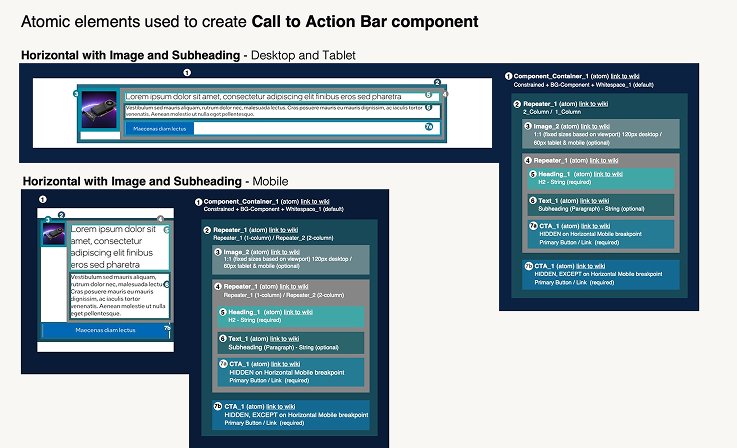
- Clear Specification Documents: Present technical details with minimal design for easy scanning and reference
- Pattern Identification: Match requirements to existing patterns for reuse, ensuring consistency, accessibility, and maintainability
- Unique Needs Recognition: Identify when requirements necessitate new component creation rather than forcing existing patterns
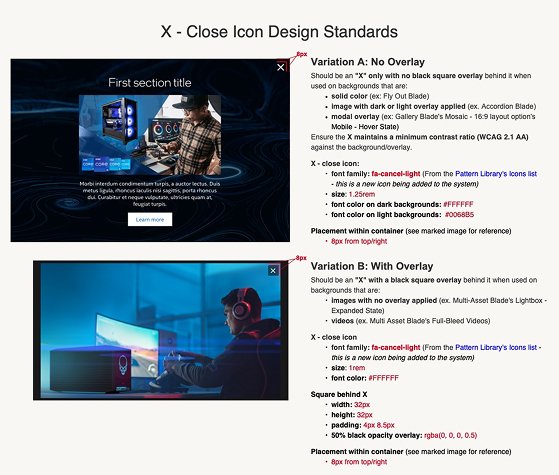
Technical Integration Approach
I leveraged my multi-disciplinary background in design, development, and technical writing to bridge the gap between creative vision and technical reality:
- Deep Understanding of AEM's Constraints: Gained comprehensive knowledge of platform limitations and capabilities to inform better design decisions upfront
- Balancing User Needs with Technical Realities: Guided design decisions that optimized both user experience and development feasibility
- Early Enhancement Identification: Spotted opportunities to influence designs at initial stages, preventing costly rework later
- Bridge Between Teams: Served as a translator between creative ambition and technical feasibility, ensuring alignment throughout the process
Testing
Validation Methods
I validated the framework through several rigorous methods to ensure it met the needs of all user groups:
- Pre-development reviews: Conducted sessions with engineering teams to confirm specifications were complete and accurate before development began
- Iterative feedback sessions: Gathered continuous input from cross-functional stakeholders throughout the documentation creation process
- Pilot testing: Tested the framework during select component development cycles to validate its effectiveness in real-world scenarios
- Post-implementation reviews: Captured lessons learned after component launches to continuously improve the documentation process
Key Findings & Iterations
The validation process revealed several important insights that shaped the final framework:
- Narrative context was essential: Teams found that having story-driven documentation alongside technical specifications was important; understanding the "why" was just as crucial as knowing the "what."
- Visual storytelling reduced errors: The use of visual examples and user scenarios significantly minimized interpretation errors during implementation.
- Real-time collaboration was crucial: Documentation should facilitate ongoing conversations and feedback rather than serve as a one-way transfer of information.
- Living documentation added value: Documentation that evolves alongside a component during development remains useful, whereas static documents quickly become outdated.
- Early technical input prevented rework: Involving developers in the review of documentation before finalizing designs helps identify feasibility issues early on, thereby preventing rework.
Solution & Results
Final Design Solution
I delivered a comprehensive documentation framework that transformed how teams collaborate and create:
- Visual storytelling documents to communicate complete component narratives
- Living documentation to capture changes and QA feedback
- Process integration, embedding documentation throughout the design and development cycle
- AEM-informed constraints integrated into design guidance
- Knowledge preservation system surviving team transitions and tool changes
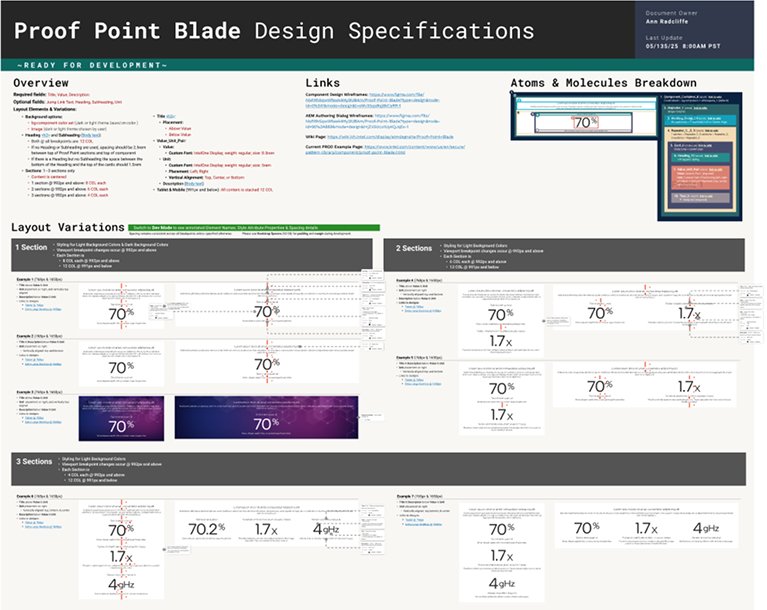
Strategic Process Changes
The framework fundamentally changed how our team approached component development:
- Pre-development reviews became standard practice: Engineering teams reviewed specifications before development began, catching issues early.
- Documentation evolved from deliverable to process: Teams treated documentation as an ongoing collaboration rather than a one-time handoff.
- Cross-team communication improved: Shared vocabulary and context reduced misunderstandings and rework.
- Process integration embedded documentation: Documentation became part of the workflow rather than separate from it.
Quantitative Results
70%
Reduction in development questions
98%
Team adoption rate
5%
Rework cycles for documented components
↑
Project velocity improvement & team collaboration
Qualitative Impact
- Single Source of Truth: Created comprehensive documentation used from project kickoff to launch, eliminating confusion over different versions.
- Scalable Process: Established a standardized framework adopted across all new component development.
- Knowledge Preservation: Captured context and rationale, ensuring continuity despite team transitions and changes in tools.
- Improved Decision-Making: Teams made better choices with access to complete context and historical reasoning.
- Reduced Onboarding Time: New team members and agency partners could independently understand the system.
- Enhanced Collaboration: A shared understanding between design, development, and QA teams reduced friction and improved teamwork.
Long-Term Organizational Benefits
- Established documentation as a strategic UX practice, not just a deliverable
- Created a model that was replicated for other Intel.com initiatives
- Demonstrated how strong documentation bridges organizational silos
- Preserved institutional knowledge that would have been lost during transitions
- Elevated design excellence by ensuring accurate implementation of UX vision
"Ann cuts development process timelines by months and creates harmonious collaboration that makes the entire team sing."
Georgie Lewis - XD Team Project Manager at Intel
Reflection & Learnings
This project demonstrated how strategic UX thinking extends beyond individual designs to systematic process improvement, proving that the most elegant designs fail without clear implementation guidance.
What Worked Well
- Treating Documentation as a UX Problem: Approaching documentation with the same rigor as user-facing products by identifying the needs of users (developers, QA, stakeholders) and designing solutions specifically for them.
- Balancing Constraints with Principles: Working within existing platform limitations while building a foundation that can scale and evolve.
- Using Narrative Context: Enhancing technical specifications with storytelling to explain the "why" behind decisions, not just the "what."
- Leveraging Hybrid Background: Utilizing my combined expertise in design, development, and technical writing to bridge creative and technical teams effectively.
- Embedding Documentation in Workflow: Integrating documentation into the process rather than treating it as a separate deliverable, ensuring it remains current and valuable.
Challenges Faced & How I Overcame Them
- Tool Limitations: Navigating existing platforms (SharePoint, existing wikis) while building a foundation for future improvements, proving value before requesting new tools.
- Adoption Resistance: Demonstrating immediate value through pilot projects before asking for behavior changes, focusing on showing results rather than simply explaining.
- Resource Constraints: Proving ROI through small-scale pilots before seeking full implementation resources, gradually building momentum.
- Knowledge Gaps: Leveraging my coding background to quickly master AEM and technical constraints, becoming fluent in both design and development languages.
- Maintaining Living Documentation: Integrating documentation updates into the development process instead of treating them as separate tasks.
What I Would Do Differently
- Start with More Structured Pilot Testing: I would gather quantitative baseline metrics from the outset to better demonstrate improvement and ROI.
- Transition to Figma Sooner: Encourage the team to adopt more collaborative tools earlier for improved real-time collaboration.
- Establish Formal Training Program: Create a structured onboarding to accelerate adoption across larger teams rather than relying solely on organic adoption.
Key Strategic Insights
- Documentation is UX Strategy in Action: This project illustrated that strategic UX thinking extends beyond individual designs to include systematic process improvement. The most elegant designs require clear implementation guidance to succeed.
- My Unique Value Proposition: My combination of design skills, technical knowledge, and UX strategy allowed me to create documentation that actively shaped better user experiences while navigating platform constraints. I acted as a bridge between creative ambition and technical feasibility.
- Broader Impact: The framework I created served as a model for other initiatives on Intel.com, demonstrating how strong documentation can bridge organizational silos, preserve institutional knowledge, and elevate design excellence throughout the enterprise.
- Process Over Deliverables: The real transformation came from changing how teams viewed documentation, from a final deliverable to an ongoing collaborative process integrated into development.
